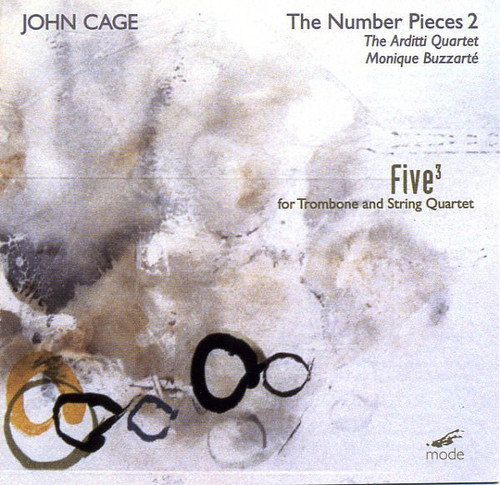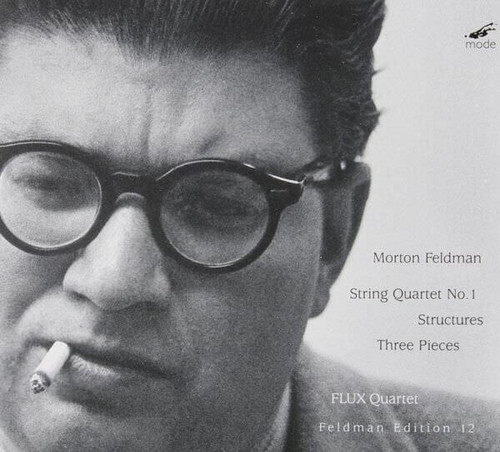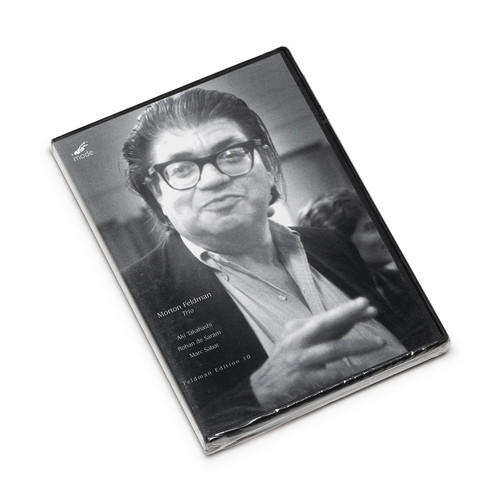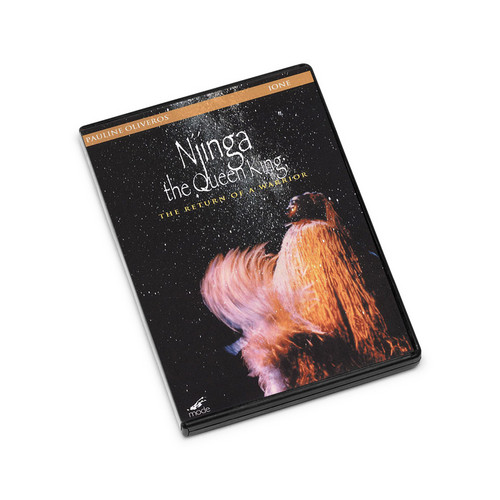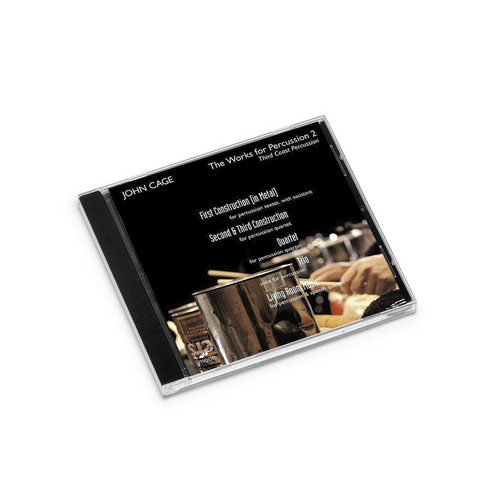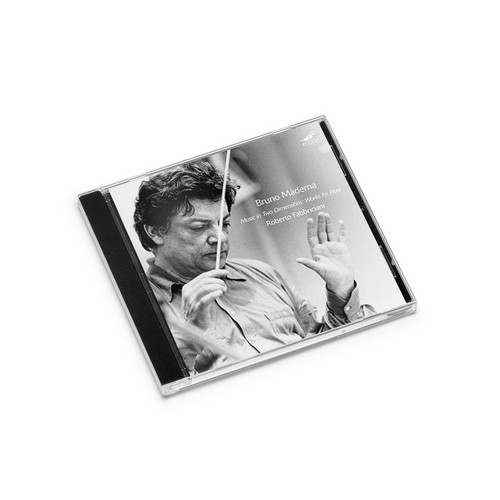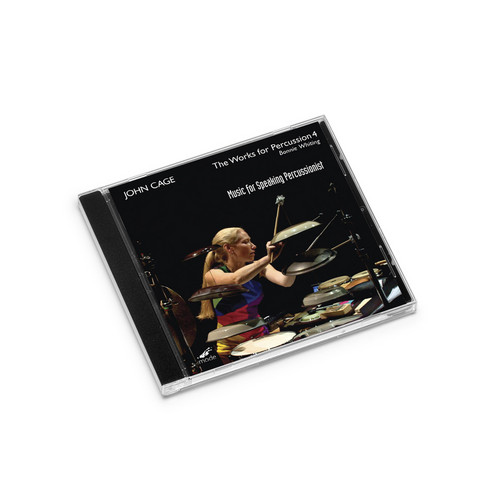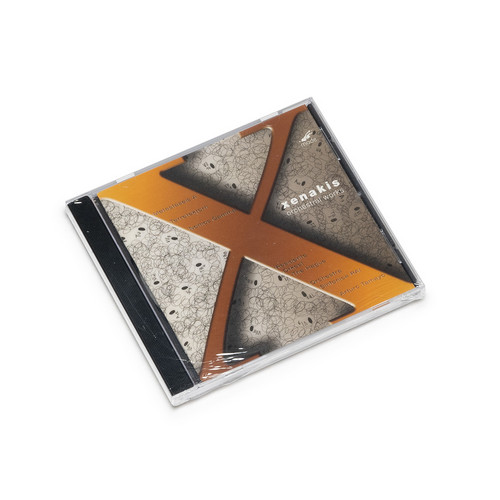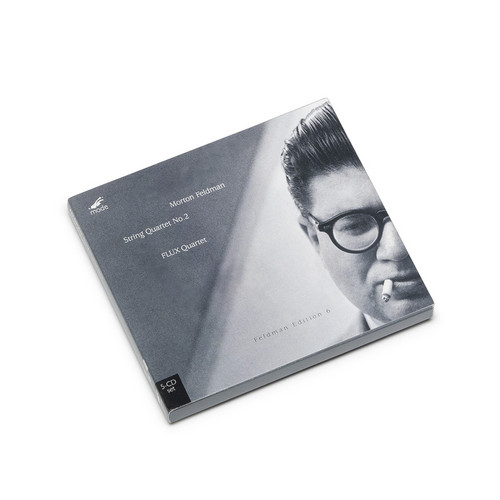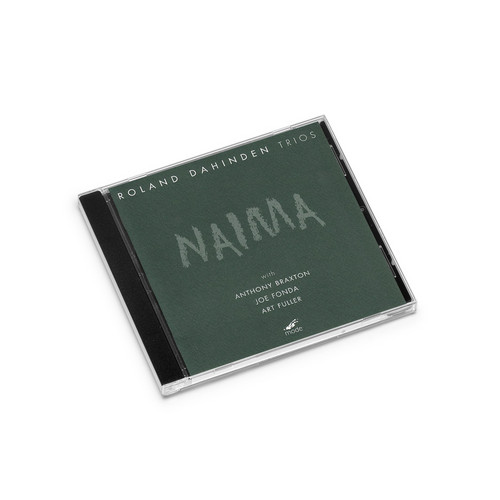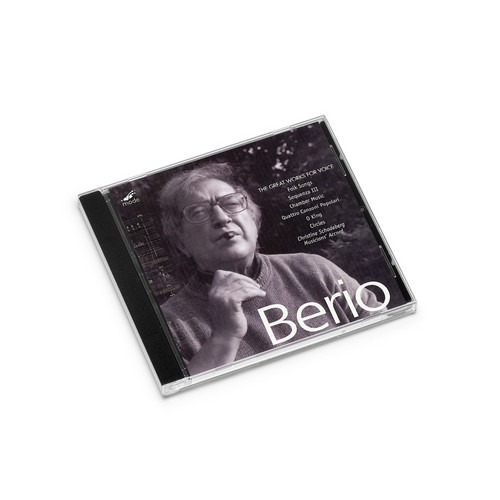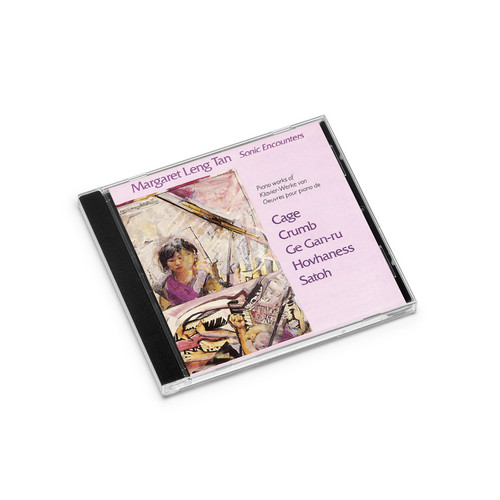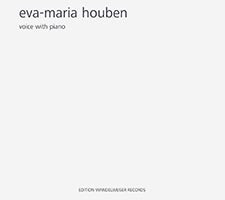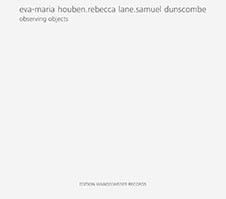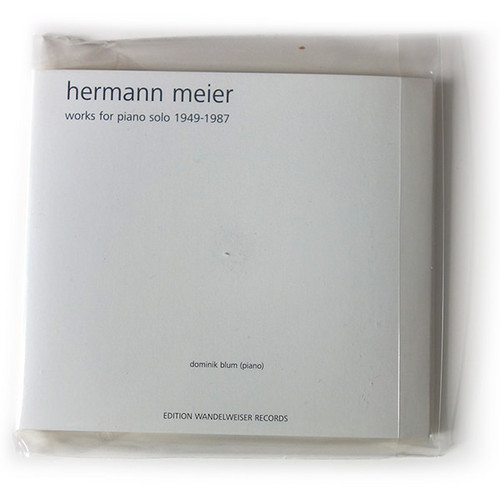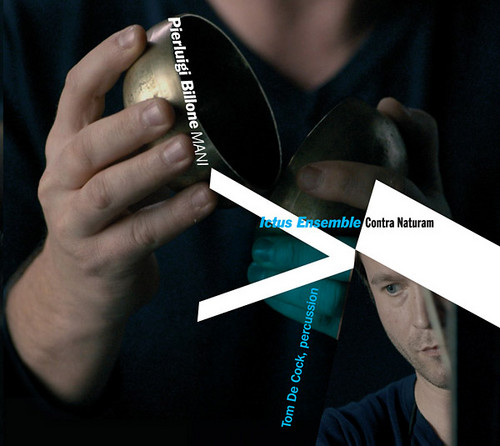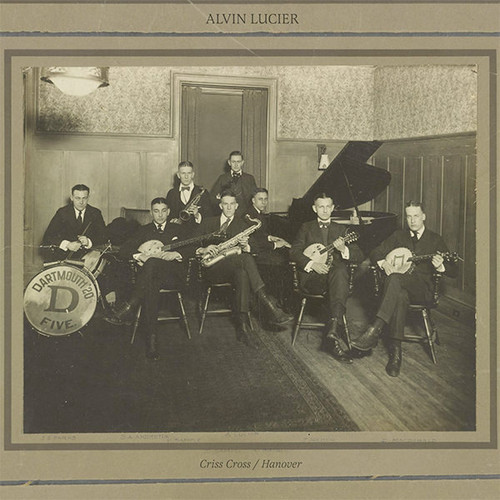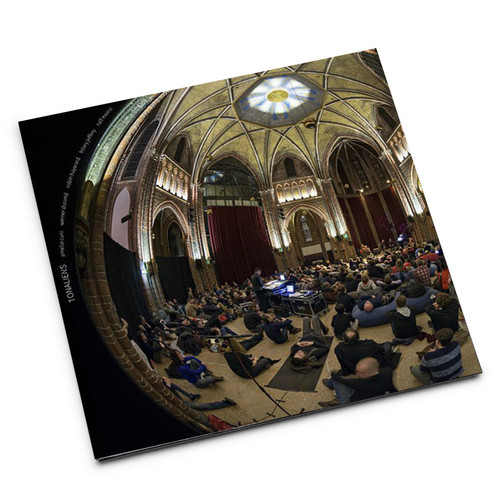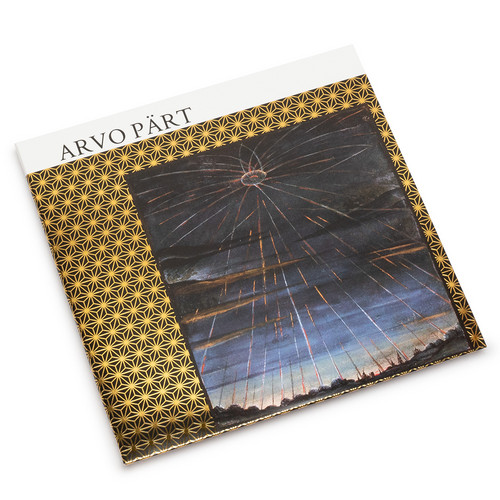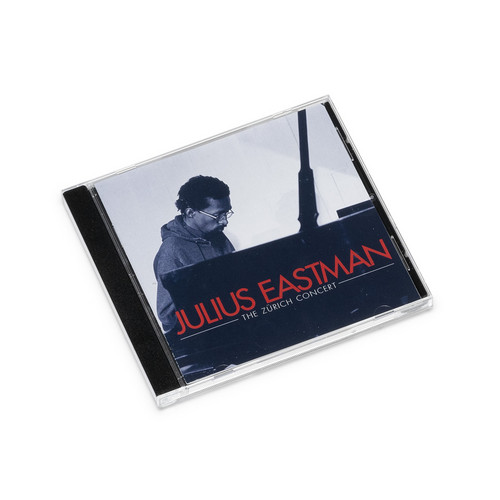The Number Pieces 2: Five³
During the last few years of his life, John Cage wrote many pieces in the same general vein as Five3. They are often referred to as "the number pieces." This references the titles of the pieces, which are all simply the number of the performers. Superscripts are added as necessary to distinguish the individual pieces (this is the third quintet, for example). These works are also called "the time-bracket pieces," a reference to the notation of the pieces. Each event in the piece consists of…
String Quartet No. 1
The Flux Quartet follow their acclaimed, best selling recording of Feldman’s monumental 6-hour String Quartet No. 2 (mode 112, 5-CDs or 1-DVD) with this release, thus completing their cycle of Feldman’s string quartets. String Quartet No. 1 is one of Feldman’s earliest long-scale pieces. Unlike other recordings of String Quartet No.1, the FLUX recording respects Feldman’s tempo and all of the repeats, making it the longest recording of the piece.
The set also contains Feldman’s two quartets f…
Trio
The expansive length of Morton Feldman’s Trio (1 hr., 45 min., 22 sec.) requires a new approach to listening, which takes scale, the physical experience of sound, and novel uses of musical memory into consideration. With his delicate manipulation of musical materials, Feldman blurs the listener’s sense of time as their musical memory struggles to distinguish between past and present sounds - listeners are free to lose themselves in the beauty of each musical moment. Aki Takahashi and Rohan…
Njinga: The Queen King – The Return of a Warrior
Written and Directed by IONE Original music and Sound by Pauline Oliveros Traditional Congolese Music by Titos Sompa Set and Costume Design by Valerie Maynard, Dance and Movement by Carol Chappell, Nego Gato, Biza Sompa and Titos Sompa, Traditional Brazilian Music and Dance by Nego Gato.
Njinga the Queen King is a collaborative effort between writer/director Ione and composer Pauline Oliveros, which they refer to as “a play with music and pageantry.” It is based on historica…
The Works for Percussion 2
John Cage’s vision of the future of music was first shaped by an intense creative period from 1935-1942, when he wrote many of the seminal works of percussion chamber music featured here. When he composed these works, the young Cage was basically the same age as the members of Third Coast Percussion. This release includes all three of the groundbreaking Constructions. First Construction (in Metal) utilizes dozens of metal instruments which are beaten, scraped and shaken, creating an other w…
Music in 2 Dimensions – Works for Flute
In honor of the 40th anniversary of great composer/ conductor Bruno Maderna’s (1920-73) death, Mode is pleased to release the first complete CD of Maderna’s music for flute. The flute played an important part in Maderna’s oeuvre due to his friendship with the exceptional flutist Severino Gazzelloni, who had premiered almost all of the flute compositions. Musica su due dimensioni is among the earliest examples to make live music interact with electro-acoustic sounds recorded on tape. There …
Cage Edition Vol.52 : The Works for Percussion 4
**CD Edition** A Flower; The Wonderful Widow of Eighteen Springs; 51’15.657” for a speaking percussionist (realization Whiting); Music for Two (By One) (realization Whiting) — Bonnie Whiting, voice & percussion + Allen OTTE/John CAGE: Connecting Egypt to Madison through Columbus Ohio, Cage, and the History of the American Labor Movement (realization Otte) — Allen Otte, voice, prepared piano, percussion.
Xenakis Edition 15, Orchestral Works
**CD Edition** Metastaseis A (first recording), Orchestra Sinfonica RAI; Terretektorh for 88 musicians dispersed among the public; Nomos Gamma for 98 musicians dispersed among the public — Residentie Orkest The Hague, Arturo Tamayo, conductor.
String Quartet No. 2
In the 1970s Morton Feldman took up the study and collecting of antique Turkish rugs, a highly evolved and exquisite folk art. The rugs are intricately patterned, symmetrical in basic design but with constant variation and displacement in the detailed execution of that design; strikingly and subtly colored, including fine variegations of principal colors resulting from the dyeing process. Analogies are clear to Feldman's music as it takes up large-scale patterning, partly working with his famili…
Naima
Swiss musician Roland Dahinden is not your typical trombonist. Equally at home in New Music, Jazz and Improvisation, he is a favorite interpreter of Anthony Braxton, John Cage, Christian Wolff and Alvin Lucier, as well as being acclaimed for performances in the trombone/piano duo with Hildegard Kleeb. On disc, Dahinden is well known for his Hat Art recording devoted to Cage and Wolff. This disc is the first release of his own compositions and interpretations of John Coltrane's classic Nai…
The Great Works For Voice
Mode's reissue of Christine Schadeberg's 1995 recital of vocal music by Luciano Berio is a welcome addition to the catalog. While her performances don't make the listener forget the individuality and panache of Cathy Berberian, for whom most of these pieces were written, Schadeberg more than holds her own in her technical and expressive mastery of the music. Her voice is not large, but is remarkably flexible and secure, and her tone is pure. These performances are models of precision and clarity…
Sonic Encounters
The second recording from Margaret Leng-Tan, the "diva of the avant-garde", featuring works by three composers whom she specializes in: John Cage (USA), Somei Satoh (Japan) and Ge Gan-ru (China/USA). With Sonic Encounters: The New Piano, she explores the effect of Asian aestehtics on contemporary American composers and the influence of American composers on their Asian counterparts.The first recordings of two early works by Cage impart a hard-edged brilliance not usually associated with the prep…
Voice with Piano
2017 release **
"Recorded in March 2016, Voice with Piano is true to its title. It features Houben as performer and composer, performing three of her compositions, playing piano alongside soprano Irene Kurka. The disc opens with the three-part "Adagio" with text by the Belgian Felix Timmermans (1886-1947), sung in the original Flemish. So, non-Flemish speakers will not get the literal meaning of the words but, thanks to Kurka's expressive singing, their drama and emotion is all too clear. The pi…
Observing Objects
2017 release **
"Observing Objects is in stark contrast to Voice with Piano in several ways and it helps expand the picture of Houben and her music. Once again, she is featured both as performer and composer, this time playing in the company of Samuel Dunscombe on bass clarinet and Rebecca Lane on bass flute, on recordings dating from May 2017. Ingeniously, the album consists of two versions of the title piece, the first with Houben on organ, the second on piano, each one lasting about twenty-ni…
Works for piano 1949-1987
in this edition we hear for the first time the complete solo piano works from between 1949 and 1987 of the swiss avant-garde composer Hermann Meier. Before the time of the three movement sonata meier composed several dodecaphonic works some of which were cyclic. these were not considered for this CD, since the sonata contains structurally a replica of all that meier wrote before. the sonata coincides with the first serial sketches and visions, together with integral thinking using rows and is as…
Mani
Mani is the very first recordings of the new collection Contra Naturam, a collaboration between Ictus Ensemble and Sub Rosa. Mani is released as a double-CD; Includes 24-page booklet.The concept of Contra Naturam: The "magic of the record" befits contemporary music, which starts by adhering to an open, flexible sonic space where magnetic bolts of lightning shoot through. In that respect, at least, it has always been pop. The record lifts the curtain on a virtual stage; it creates its own sp…
Criss-Cross / Hanover
**2020 small repress** Black Truffle present the premier recordings of two recent works by legendary American experimental composer Alvin Lucier. Lucier has been crafting elegant explorations of the behavior of sound in physical space since the 1960s and is perhaps best known for his 1970 piece I Am Sitting In a Room (LCD 1013CD). He has written a remarkable catalog of instrumental works that focus on phenomena produced by the interference between closely tuned pitches, often using pure electron…
Tonaliens
Tonaliens is a Berlin-based group investigating the inner dimensions and outer limits of Just Intonation. It was formed in 2014 by Amelia Cuni (voice), Werner Durand (invented wind instruments), Robin Hayward (microtonal tuba), Hilary Jeffery (trombone), and Ralf Meinz (live sound, electronics). The group came together shortly after the release of the software version of the Hayward Tuning Vine, an interface for exploring microtonal tuning that allows for direct and intuitive interaction with th…
Für Alina
Compilation of Mississippi's favorite Arvo Part pieces. All sparse and beautiful arrangements. Some solo piano pieces, some duets with piano, violin cello and viola and one string quartet. The pieces on this record are all unique to the style of Arvo Part—deceptively simple compositions that force you to live in the moment you are listening to them. A Part quote from the back of the record: "You can kill people with sound. And if you can kill, then maybe there is also the sound that is op…
The Zürich Concert
Just when you think you are grasping the breadth and quality of the music of Julius Eastman (1940 - 1990), a recording such as Julius Eastman: The Zürich Concert shows up, and you have to go back and reassess his work and wonder what will show up next. This recording is from a 1980 solo seventy-minute improvisatory concert in Zürich, a cherished cassette made by a friend of Eastman's, who recently realized its uniqueness and decided that he should share it. The Zürich Concert was performed on Oc…
